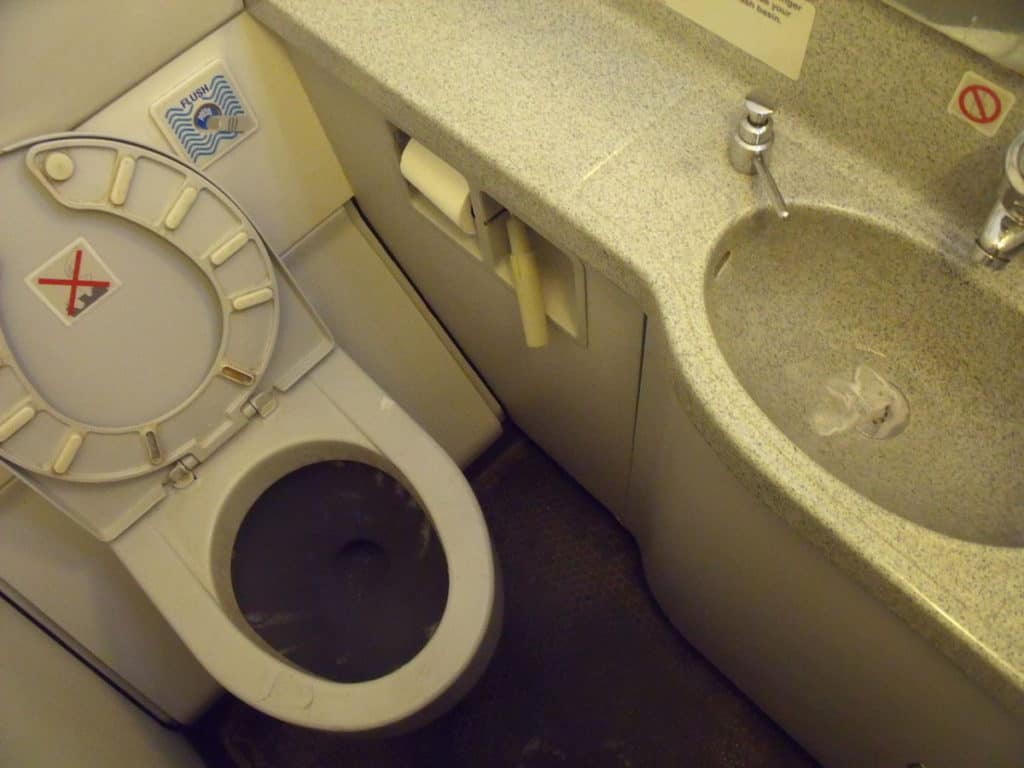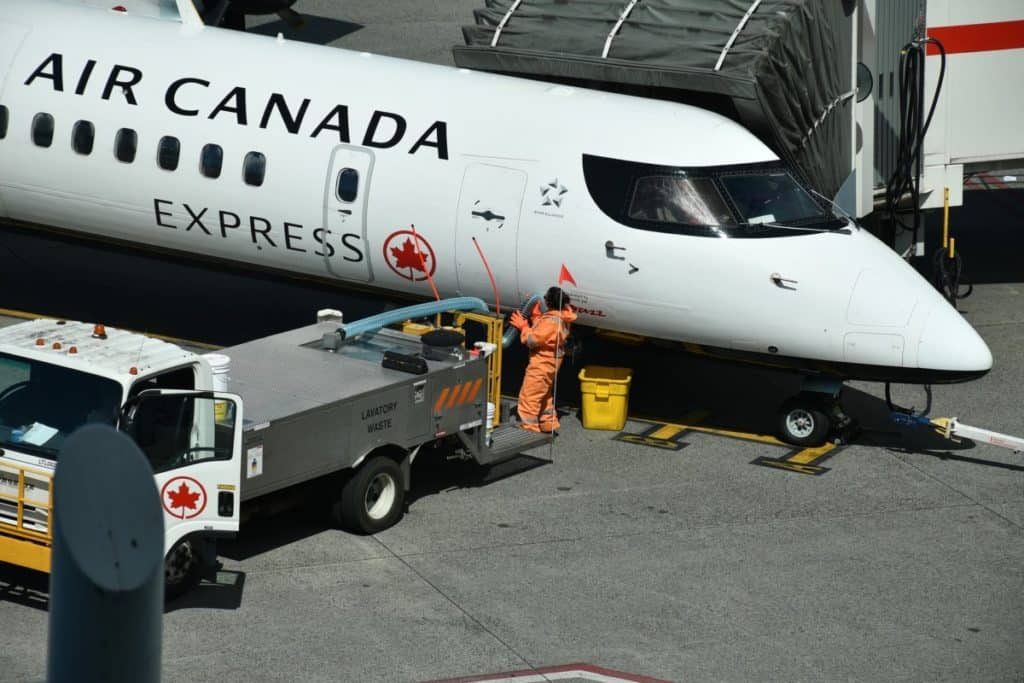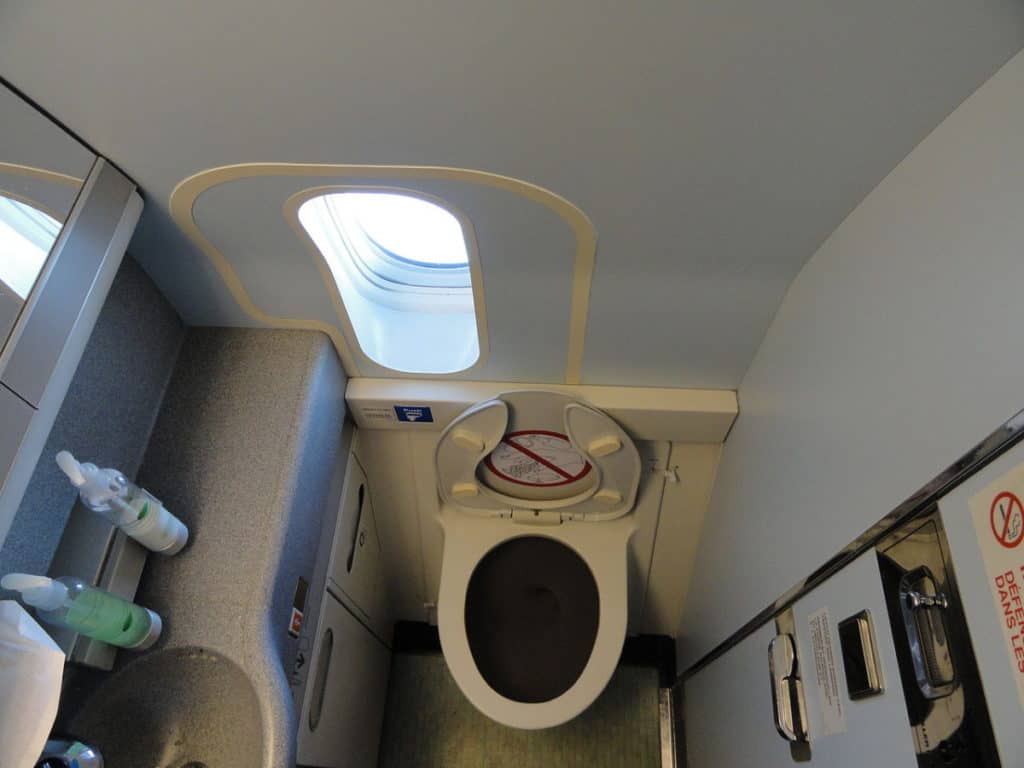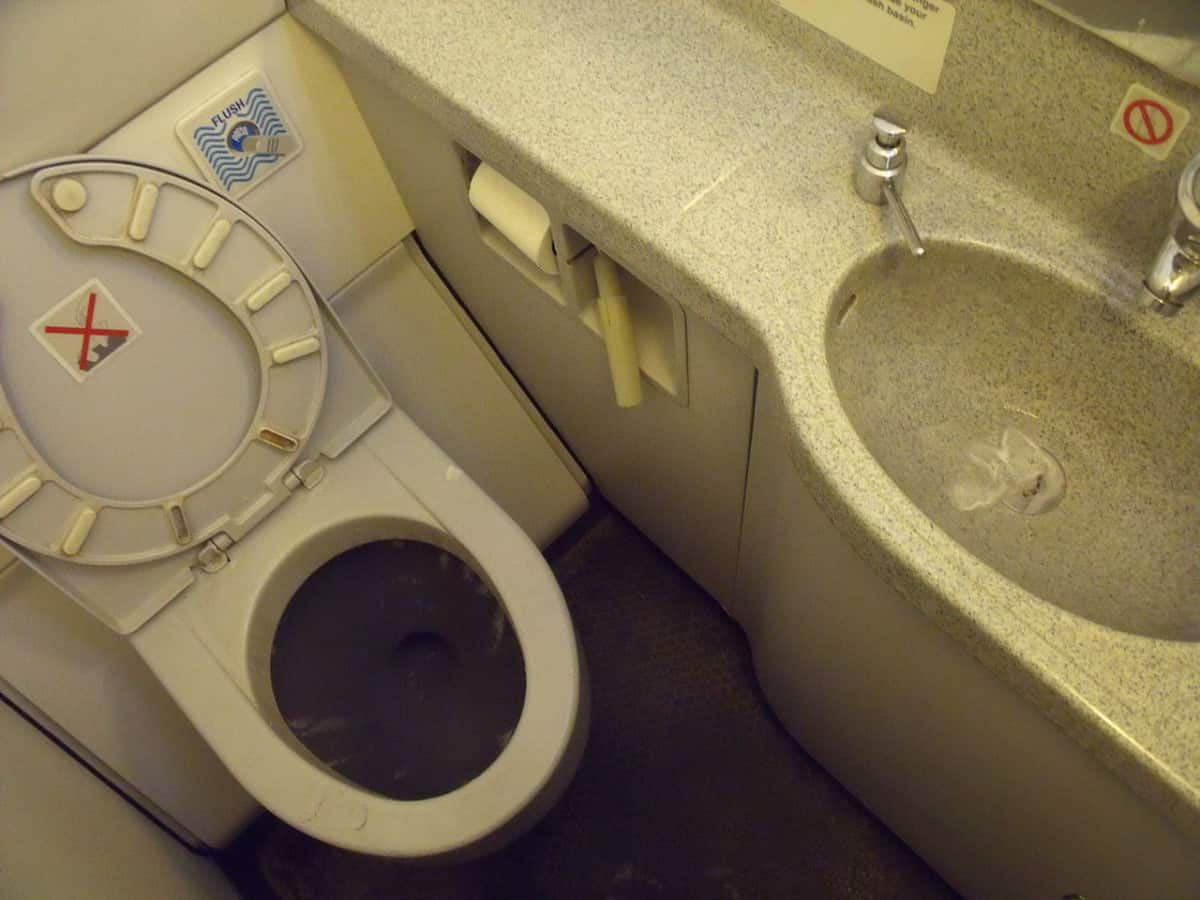
Going to the lavatory in the middle of a flight is never a pleasant experience, but you probably won’t have much of a choice about it. Perhaps the most unpleasant thing about them is the roar they make every time you flush. What’s behind this seemingly unnecessary loudness?
Airplane lavatories are loud because the flushing system uses a vacuum to remove the waste from the bowl at high speeds. This system uses very minimal water as carrying water on a plane is heavy, reduces cargo space, and reduces the number of passengers and baggage that can be flown.
The modern airplane lavatory has had a serious design project behind it to make it efficient, lightweight, and odor friendly. The loud noise that it creates is a by-product of its design but if you want to know more about how these toilets work, please read on!
How Do Airplane Lavatories Work?
Airplane toilets use a pressure difference between the inside and outside of the airplane to create a vacuum to suck out the toilet bowl waste. When the flush button is pressed a small amount of odor-eliminating fluid is dispensed before a valve opens to create the vacuum. Waste is held on the plane.
Toilets on the ground use a siphon system. A large surge of water is released from a holding tank above the toilet bowl and with the help of gravity this surge pushes the waste around a weir in the base of the toilet and into the sewer system. It’s an effective and, in comparison, not too loud system, but it uses ALOT of water and water is heavy!
On average, each passenger will use the lavatory an average of 2.5 times during a long-haul flight and the average ground-based toilet uses 2-4 gallons of water each flush. For an airplane to accommodate 300 passengers it would have to carry over 3000 gallons of water weighing around 25,000 lbs!
To remove the problem of carrying all this water the modern airplane toilet utilizes a non-stick toilet bowl and when you press the ‘Flush’ button a small solution called SkyKem is released into the bowl. Skykem helps decompose waste, kill bacteria, and reduce odor.
Once the Skykem has been dispensed, the airplane toilet system opens a valve that uses the lower atmospheric pressure from outside the aircraft to rapidly pull the waste from the toilet bowl and into the airplane sewage holding tanks. It does not dump it outside of the airplane!
This pressure difference is what you hear as the whoosh. As the valve closes, the toilet goes quiet and is ready for the next visit.
By using this system the airplane only needs to carry a small amount of Skykem and the weight of the waste is already accounted for because it has only moved from inside the passenger to outside the passenger.

Join My Newsletter & Get Great Tips, Information and Experiences To Help You Become a Superb Pilot!
What Happens to the Toilet Waste on Airplanes?
Airplane toilet waste is funneled through a network of pipes under the cabin floor to holding tanks usually located at the rear of the airplane. Automatic monitoring systems use valves to ensure the holding tanks fill evenly to aid in even weight distribution. Tanks are emptied upon landing.
Just like the toilets in your own home, airplane toilets are all connected. The sewage pipes are all fed through the complex airplane structure to the rear of the airplane so that means all the First-Class waste runs under your seat – Nothing ever changes in society’s class system!
Once the airplane lands, the airport’s ground servicing staff empties the sewage holding tanks and refill the Skykem tank so the airplane is ready for its next flight.

Learn More…
Try These Articles:
* This Is Why Plane Windows Are So Small!
* Can Pilots Go To The Bathroom?
There have been issues in the past when airplanes have been grounded with passengers on board and the airplane’s sewage system has reached its capacity. Although this is very, very rare it can happen and it is not a pretty sight. Once the system is full, there is nowhere for the waste to go!
When the ground service staff do get to empty the airplane’s waste tanks they use purpose-made extraction vehicles that store the waste in a holding tank until it is transferred into the airport’s ground sewage system. Just like your home, it is then piped to the cities’ sewage and waste-water treatment facilities.
Can Airplane Toilets Hurt Me?
Airplane toilets are designed so that nobody can get hurt during a flush cycle. Specially designed toilet seats have vents around them to ensure any person still sitting on the toilet during a flush cycle will not be harmed by the vacuum.
There are myths floating around of how some people were killed by having their insides sucked out through their rectum when an airplane toilet was flushed while they still sat on the seat. As you can imagine, this is something that the toilet designers spent a great deal of time and resources to ensure never happens!
Because the airplane toilet uses a lower air pressure to suck out the toilet contents, the designers had to make sure that there would never be a seal between the passengers’ buttocks and the toilet system. To do this they designed a special toilet seat that sits above the toilet bowl with an air gap all around it.

By using spacers like pillars on a bridge there is always a passage for air to travel from the toilet cubicle and into the vacuum system. Without this clear passageway the passenger would be in grave danger should the flush button become pressed.
It goes without saying that anyone still sat on the toilet when they accidentally start a flush sequence would be startled and I’m sure a rapid vertical departure from the toilet would ensue, but no danger is ever present to the person!
Learn More…
Try These Articles:
* How Long to Refuel an Airplane? – 15 Most Common Planes
* Why Do Airplanes Need to Be Towed & Pushed?


